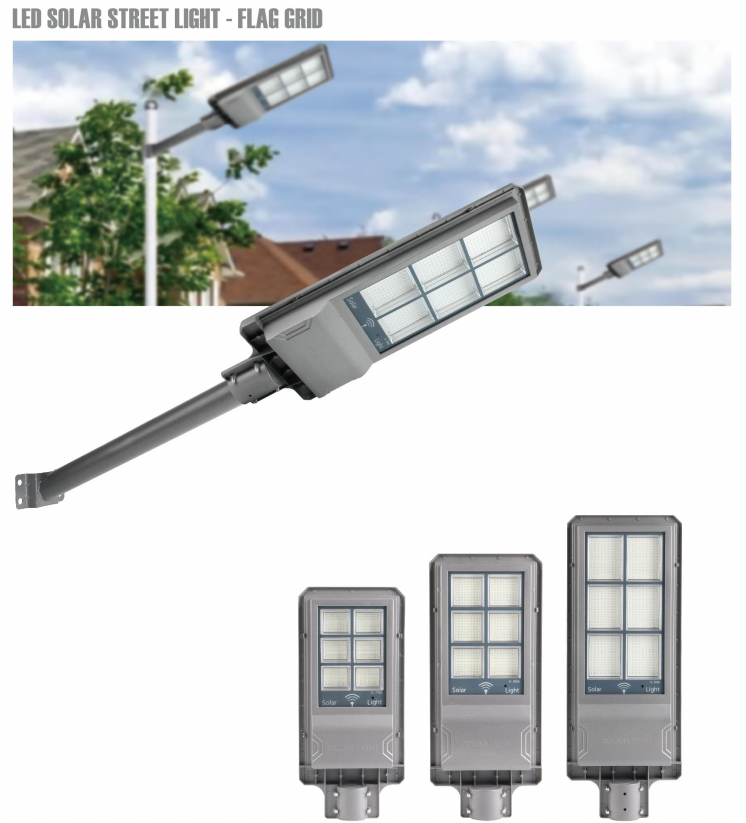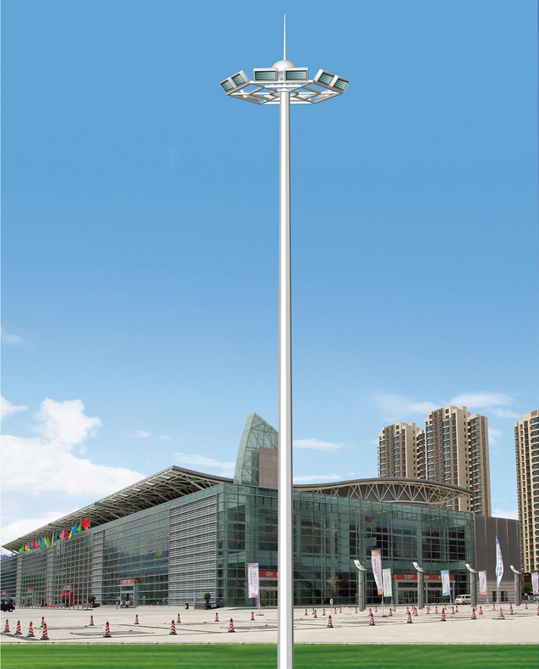What are the manufacturing processes for smart streetlight poles?
Integration of work and functional modules, surface treatment, intelligent system debugging, and other related processes. The following is a specific process analysis:
1、 Material selection and pretreatment
1. Selection of main materials
High strength steel (such as Q355B low-alloy structural steel):
Advantages: High bending strength (≥ 355MPa), suitable for coastal typhoon areas (wind resistance level ≥ 12) or heavy-duty traffic sections.
Process: It is necessary to use hot-dip galvanizing for rust prevention (coating thickness ≥ 85 μ m) to prevent acid and alkali corrosion (such as acid rain environment in industrial areas).
Aluminum alloy (such as 6063-T6 aluminum alloy):
Advantages: Lightweight (density only one-third of steel), corrosion-resistant, suitable for landscape roads or scenes with low load-bearing requirements (such as scenic trails).
Process: Adopting extrusion molding technology, the surface can be anodized (oxide film thickness ≥ 15 μ m) to enhance aesthetics and weather resistance.
Composite materials (such as glass fiber reinforced plastic FRP):
Advantages: Good insulation, anti electromagnetic interference, suitable for strong electrical environments (such as around high-voltage substations) or areas that require lightning protection.
Craftsmanship: Through compression molding, complex curved shapes (such as artistic lamp posts) can be customized, but the cost is relatively high.
2. Material pretreatment
Cutting and cutting:
Using CNC plasma cutting machine or laser cutting machine, the accuracy is controlled within ± 0.5mm (such as cutting error<1mm for a circular rod with a diameter of 150mm).
Example: The 6-meter-high lamp post is divided into two sections for processing (base 3 meters+top 3 meters), connected by flange bolts (bolt spacing ≤ 200mm).
Groove processing:
The welding area needs to be processed with V-shaped or U-shaped grooves (angle 60 °± 5 °) to ensure a welding depth of ≥ 8mm and improve structural strength.
2、 Structural processing technology
1. Rod body forming
Rolling process:
Suitable for cylindrical or conical rods, the steel plate is rolled into a cylinder by a plate rolling machine (the taper is usually 1:100~1:150), and automatic submerged arc welding is used for longitudinal welds (weld clearance ≤ 3mm).
Case: A conical rod with a diameter of 200mm, with a bottom wall thickness of 6mm and a top wall thickness of 4mm, achieved through gradual rolling to achieve a transition of taper.
Welding process:
Main weld seam: Carbon dioxide gas shielded welding (CO ₂ welding) is used, with a current of 200-300A and a voltage of 25-30V. After welding, ultrasonic testing (UT testing) is carried out to ensure the absence of defects such as pores and cracks.
Attachment welding: For lamp brackets, sensor mounting bases, etc., argon arc welding (TIG welding) is used, with a welding point height of ≥ 5mm, and anti-corrosion paint repair treatment is required.
Direct processing:
After the rod body is formed, it is calibrated by a hydraulic straightening machine, and the straightness error is ≤ 1.5mm/m (such as a 10 meter rod body bending degree < 15mm).
2. Flange processing
Bottom plate production: Steel plates with a thickness of 20~30mm are used, and bolt holes (with a diameter 2mm larger than the bolt diameter) are machined using a CNC drilling machine, with a hole position deviation of ≤ 1mm.
Reinforcement welding: Weld triangular reinforcement bars (thickness ≥ 10mm) on the back of the flange, with a spacing of ≤ 300mm, to enhance the anti overturning ability (refer to GB 50009-2012 "Code for Load of Building Structures" for wind resistance design).
3、 Integration process of functional modules
1. Internal pipeline layout
Separation of strong and weak electricity:
The lighting circuit (strong current) and communication cable (weak current) are laid in separate slots with a spacing of ≥ 50mm to avoid electromagnetic interference (such as RS485 signal transmission attenuation<5%).
Metal cable trays (wall thickness ≥ 1.5mm) or PVC flame-retardant pipes are used for protection, with cable reserved length ≥ 1.5 meters for easy maintenance in the later stage.
Sensor installation:
Environmental monitoring sensors (such as PM2.5 probes) need to be installed at the top of the pole in a ventilated area, with a horizontal distance of ≥ 300mm from the lamp post, to avoid interference with data accuracy caused by lamp heat dissipation.
The camera bracket needs to undergo shock absorption treatment (such as installing rubber pads), with a vibration amplitude of ≤ 0.5mm/s, to ensure stable video images.
2. Standardization of external interfaces
Modular mounting:
Adopting a uniform U-shaped groove or flange interface (such as M12 bolt hole spacing of 100mm × 100mm), it supports the rapid installation of 5G base stations, charging piles and other equipment, with an installation time of ≤ 30 minutes per unit.
Example: Huawei Smart Light Pole supports "plug and play" modules, connected through IP68 waterproof connectors, and can work stably in environments ranging from -40 ℃ to 80 ℃.
Waterproof sealing:
The module connection uses silicone rubber sealing rings (compression rate of 20%~30%), combined with waterproof glue (such as Dow Corning 730) to fill the gaps. The testing standard is IP66 waterproof rating (anti strong water spray).
4、 Surface treatment process
1. Rust and corrosion prevention
Hot dip galvanizing:
Process steps: acid pickling and rust removal → plating assistance → hot-dip galvanizing (zinc solution temperature 440 ℃~460 ℃) → water cooling → passivation.
Quality standard: Zinc layer thickness ≥ 85 μ m (salt spray test ≥ 1000 hours without red rust), suitable for coastal or high humidity areas (such as Guangdong and Fujian).
Electrostatic spraying:
Process steps: phosphating treatment → electrostatic spraying of polyester powder (particle size 80-120 μ m) → high temperature curing (180 ℃~200 ℃, 20 minutes).
Coating thickness: 80-100 μ m, color can be customized (such as RAL color card 7035 light gray), weather resistance ≥ 10 years without fading.
2. Landscape treatment
Imitation wood grain transfer printing:
The wood grain pattern is attached to the metal surface by heat transfer technology, and the adhesion of the film reaches ISO grade 4B (no falling off by cross cut test), which is suitable for historical blocks or ecological scenic spots.
Gradient color spraying:
The use of multi gun spraying technology to achieve color transition (such as gradually changing from dark gray at the bottom to silver white at the top) requires the use of specialized fixtures to ensure uniform coating and color difference △ E ≤ 1.5.
5、 Intelligent system debugging and testing
1. Electrical performance testing
Insulation resistance: The insulation resistance of strong current circuits to ground is ≥ 2M Ω (measured by a 500V megohmmeter), and the insulation resistance of weak current circuits is ≥ 1M Ω.
Grounding test: Grounding resistance ≤ 4 Ω (using a grounding resistance tester), an independent grounding electrode (galvanized angle steel length of 2.5 meters, buried depth ≥ 0.8 meters) needs to be set up.
2. Functional joint debugging
Lighting control: By remotely turning on and off the lights through the management platform, the test response time is ≤ 2 seconds, and the brightness adjustment accuracy is ≥ 5% (such as reducing from 100% power to 30% with an error of<2%).
Sensor linkage: Simulate PM2.5 concentration>300 μ g/m ³, test whether the LED screen automatically displays "pollution warning" and links with sprinkler dispatch (signal transmission delay ≤ 5 seconds).
5G communication testing: Use a spectrum analyzer to detect the signal strength of the base station, requiring a downlink rate of ≥ 100Mbps and an uplink rate of ≥ 20Mbps within a range of 200 meters.
3. Environmental adaptability testing
High and low temperature testing: After running in a constant temperature box at -30 ℃~70 ℃ for 48 hours, the equipment failure rate is ≤ 1% (such as camera startup time<5 seconds, no crashes).
Seismic testing: Simulate a magnitude 7 earthquake (vibration frequency of 10-50Hz, acceleration of 0.2g) for 30 minutes, with rod displacement ≤ 5mm and no module loosening or detachment.










Please first Loginlater ~